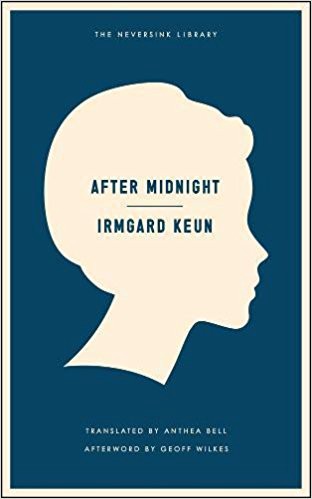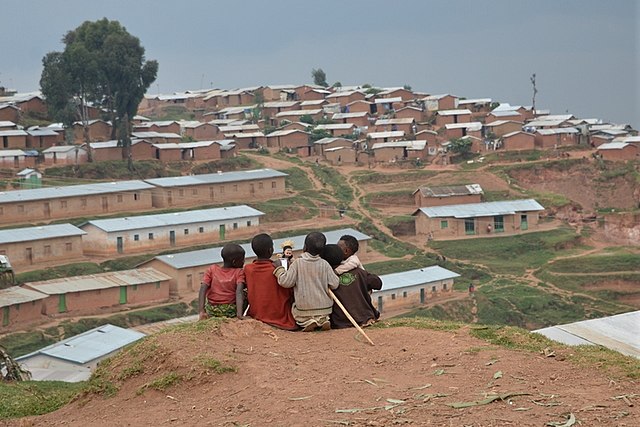Books & Culture
Now Is the Time to Read This Novel About the Early Days of the Third Reich
Irmgard Keun’s ‘After Midnight’ is harder to read than ever before—and more necessary

I ’d packed After Midnight, Irmgard Keun’s novel about life during the rise of the Third Reich, to read on the train from New York City. I didn’t know that its last pages took place on a train as well, or that they brimmed with tension and with the most bittersweet kind of hope. I also didn’t know that I’d be nearing the end of the book when Border Patrol entered the train at Syracuse, NY, to question nothing and no one except the family — man, woman, infant in arms — of visibly South American descent sitting a few rows behind me.
I just sat there — we just sat there, the great physical machine that contained us all sat there, while the man displayed papers and gave explanations. These satisfied the Border Patrol agents and they went away. The family got off the train at Buffalo. They had never crossed a border, not on that trip. They’d never meant to.

The policy that allowed Border Patrol to question them up to 100 miles from the edge of Canada was not new that winter of 2010. Neither was After Midnight, though Melville House had just put out the first English translation.
It was the Obama era. I posted indignantly on Facebook about Border Control’s incursion, how wrong it seemed. I also posted about how perfect and haunting the book was, in spite of — maybe because of — its moments of melodrama and dark humor. A few of my friends, the more permanent radicals, agreed on both counts. The rest didn’t talk about Border Control in those days.
Then 2016 happened. Experts on fascism asked us to notice what had changed, and I did. They didn’t ask, but I had to notice, what hadn’t changed because it had been there all along: Border Patrol on the buses and trains that never crossed the border, the Prosperity Gospel loathing of the poor as borderline human, the constant fear of harmless things and bland acceptance of genuine threats, the craving for that leader who would fix it all.
Experts on fascism asked us to notice what had changed, and I did. They didn’t ask, but I had to notice, what hadn’t changed because it had been there all along
America’s immigration policy, never gentle, became a scourge among even the most harmless — children, parents, spouses, business owners, local fixtures, friends. As winter turned to spring I felt like I was protesting always. I joined the indignant crowds protesting a travel ban in sight of the Statue of Liberty; I congregated in Washington Square Park with hundreds of others to reject Trump’s threats against sanctuary cities, drafty and leaking shelters that such things were; near City Hall I listened as unions described how they would rescue their members and city councilwomen their constituents. I did not know who I would rescue or how or whether I would know what to do. I had never rescued anyone before.
I thought: I should re-read After Midnight.
The other work on the rise of the Nazis that I felt compelled to re-read was the first volume of Art Spiegelman’s Maus, but that was different — a widely recognized classic that invited every reader to imagine themselves a mouse. And such books, putting the reader in that skin, are valuable, which is why they are numerous and often beloved. But After Midnight, alone among the books I’ve read, is a book by a cat that puts the reader square in a basket of kittens — where so many nice white well-meaning book-reading women like me, in real life, in the current moment, are.
How ‘The Remains of the Day’ Helped Me Understand Brexit and Trump
Keun published After Midnight in German in 1937, although the Nazis had banned her work years earlier due to frank portrayals of Weimar women at their most jazz-loving, sex-having, career-plotting, and generally liberated. The banning cost her her marriage to a Nazi supporter, and she became romantically involved with a Jewish doctor and went into exile. A few years after she finished the novel, she’d pull off one of the oddest survivals of World War II: having her suicide reported to the press so she could sneak back across the border and live under a false identity, largely in hiding, in Germany itself until the end of the war. That decision speaks to a woman who still felt a baffled love for her nation, even after it turned monstrous.
Sanna, After Midnight’s protagonist, is not so worldly wise as 1937 Keun, but she is in many ways equally determined. She is introduced to readers in the midst of managing her friend Gerti. Gerti is in love with a half-Jewish boy and, far from frightened, is driven to ever-greater throes of passion by the forbidden nature of their romance. A more conventional novel might have made her the heroine. The two girls (and their other friends) seem much alike to begin with, as they all spend the early pages plotting minor victories over the constricted world in which they find themselves: plotting to flirt with SA men while not overcommitting or angering them, to obtain a new blouse for the evening’s party, to lure a crush to that party.
Yet Sanna, not Gerti, breaks the pattern of her life and ends the brief novel fleeing her home and country. What turns her from her day-to-day concerns onto the path of a political exile isn’t the stuff of heroism, exactly — no sudden prophetic vision of the horrors to come or blaze of righteousness. A bit of young love, a bit of cynicism to see through the political passions of her elders, a bit of raw fear — those are the ingredients of an imperfect awakening.
What turns her from her day-to-day concerns onto the path of a political exile isn’t the stuff of heroism, exactly — no sudden prophetic vision of the horrors to come or blaze of righteousness.
Sanna’s good and bad qualities draw from the same well. Her good actions are often self-interested, meant to protect her self-image or the narrow circle of her loved ones. She’s impulsive, and her insights into her own character are imperfect. It’s easy to imagine the Sanna of the beginning of the book sticking a safety pin in her coat lapel, especially if Gerti did it first, and equally easy to imagine her pulling it out again — or forgetting entirely that it was there as she watches the police escort the dissenter at the parade away. It’s also easy to imagine her feeling terrible about that afterwards, for whatever else she may be, Sanna is at least willing to reflect on herself and try to do better.
Though Hitler appears in this novel, flying through town — and symbolically dividing the city, making it impossible for people to carry out their ordinary lives while his parade route takes priority — the real antagonists in the work are as un-epic in their villainy as Sanna is in her heroism. The good Germans of After Midnight use the Gestapo as a tool to pursue petty grudges and rivalries, flinging accusations of Communist sympathies and Jewish ancestry to clear perceived obstacles from their paths in love or business. They register that there are suddenly vicious consequences for the wrong off-hand remark or joke, but it only seems to excite real indignation in a few — and it excites something else, enthusiasm, a sense of exaltation, in others.
The thing that struck me most on reread, the thing I hadn’t yet noticed in 2010, was how futile every action can feel.
The thing that struck me most on reread, the thing I hadn’t yet noticed in 2010, was how futile every action can feel. People who have articulated theories against Nazism achieve little in this book. Some, like Sanna’s older brother Algin (once himself a banned writer, now the author of pro-regime propaganda, no doubt a figure of particular road-not-taken resonance for Keun), make doomed gestures at escape and fall into inertia. Others, like the journalist Heini, succumb to despair. But it is Sanna and her boyfriend Franz, each initially apolitical but driven by loathing for what Nazi Germany has done to their friends, who actually make dramatic moves of resistance.
Written as it was in the midst of the falling night, this is not a book that instructs us on the specifics of how to save ourselves, let alone others. Sanna saves only one person and her exile, even in its first moments, is a lonely thing — and we know that Keun, faced with the same loneliness, risked it all to return. What After Midnight does is let us look around in the dusk and see how alarming the familiar monsters have become where they loom. We know that dawn came once — but in daylight we did not do enough to clear them away, thinking them tame.










